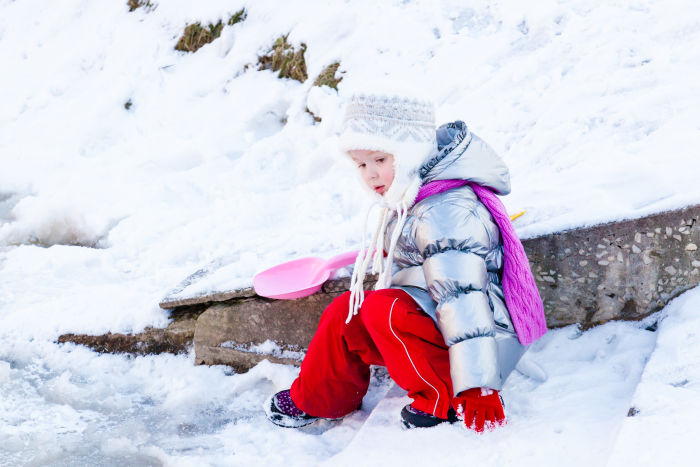
If snow is heading your way this week, take advantage of a great opportunity to keep kids busy outdoors by trying a few easy science experiments. From tracking animal prints to making maple sugar candy, all of these activities can be done in the snow, and provide a fun, educational experience for even the littlest scientists. As you try each experiment, explain what's happening and ask your child questions. Children will practice scientific thinking as they learn about liquids, solids, freezing point, and more!
Snow Graffiti
Take an old squirt or spray bottle and fill it with water and food coloring. Shake to combine, and let your kids loose outside. The colors will look cool on the snow.
Animal Tracker
After the snow has settled, take the kids out to look for tracks and paw prints on the ground. Try to identify the species based on how many toes the print has. Can your child guess the animal?
Bubble Freeze
When the temperature drops below 32 degrees, blow bubbles and watch them freeze on the wand. Your child will have a cool ice bubble for a few minutes, until it shatters!
Crystal Balls
Put a few drops of food coloring into balloons and fill with water. Tie the end and place in the snow. When frozen, take scissors and cut the balloons off the frozen orbs.
Snowflake Observation
On a snowy day, take a piece of black construction paper and catch snowflakes on it. Use a magnifying glass to observe the individual snowflakes. Is it true that no two flakes are alike?
Maple Syrup Taffy
Make your own maple syrup candy. A grownup can heat Grade A or B maple syrup in a pot until it boils, and after it cools slightly, pour it onto fresh snow. It will harden into maple taffy. Yummy!
Visit us on Facebook and share your favorite snow day science experiments!





